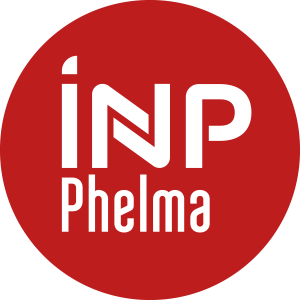Volumes horaires
- CM 8.0
- Projet 0
- TD 8.0
- Stage 0
- TP 0
Crédits ECTS
Crédits ECTS 3.0
Objectif(s)
Le cours présente les techniques principales utilisées en biophotonique.
L'approche adoptée est celle de voir le fonctionnement des outils présentés d'un point de vue ingénieur, en analysant les points et les problématiques techniques les plus représentatifs. Une attention particulière sera dédié à l'étude des lasers, des guides et des fibres optiques.
Des examples en biologie et médecine seront présentées et commentées.
Contenu(s)
1 - Introduction
• What is biophotonics?
• Why such a course?
• Examples (pulse oximeter, PDT)
• Prerequisites
• Program
• Bibliography
2 – Fundamentals
• Wavelength ranges
• Optical coherence
• Light/matter interaction (linear and non-linear. Example: SHG imaging of collagen)
• Einstein’s model for absorption and stimulated emission
• Optical gain and population inversion
• Scattering in tissues (elastic, Rayleigh)
• Light-tissue interactions
3 – Light sources and LASERs
• Radiometry and photometry
• Arc Lamps
• LEDs and semiconductors
• General LASER structures
• LASER active media and pumping
• Semiconductor LASERs
• LASER cavities and polarization
• CW and pulsed emission (Gain switching, Q-switching, Mode locking, Cavity dumping)
• Hazards, classes and safety
• Exercises and examples for surgery, hair removal, vascular lesions treatments, refractive surgery
4 – Optical waveguides and fibers
• Structure of an optical fiber
• Slab dielectric waveguide, electromagnetic treatment
• Optical fibers and guided modes, single vs multimode propagation, speckles
• Types of fibers, numerical aperture, losses in silica fibers
• Other kinds of fibers, bundles, endoscopes
• Integrated photonics, integrated biosensors
• Surface plasmon resonance (SPR)
• Surface Enhanced Raman Scattering (SERS)
• Examples and exercises
5 – Advanced imaging techniques
• Confocal microscopy
• Fluorescence imaging
• FRET: Föster Resonance Energy Transfer
• FLIM: Fluorescence Lifetime Imaging
• STED: Stimulated Emission Depletion
• OCT: Optical Coherence Tomography
• Evanescent sensing in dielectric waveguides
• Examples, exercises
Prérequis
Bases d'électromagnétisme (propagation d'onde plane, equations de Maxwell), interaction rayonnement/matière et biologie (connaissances basiques des tissus et de physiologie).
Semestre 9 - L'examen existe uniquement en anglais 
SESSION NORMALE :
Types d'évaluation : DS, CC
Evaluation rattrapable : DS
- duree : 2h
- documents autorisés : non
- calculatrices autorisées : oui
- possible en distanciel : non
- commentaires : Feuille A4 autorisée
Evaluation non rattrapable : CC - commentaires : QCM sur Chamilo
SESSION DE RATTRAPAGE : Oral
Evaluation : Oral
- duree : 1h
- possible en distanciel : oui
Examen écrit Session 1 : DS1
Contrôle continu Session 1 : CC1
Examen oral Session 2 : O2
N1 = Note finale session 1 = 95% DS1 + 5% CC1
N2 = Note finale session 2 = 100% O2
Semestre 9 - Le cours est donné uniquement en anglais 
– G. Keiser, Biophotonics, Springer, second edition 2022
– P. N. Prasad, Introduction to Biophotonics, Wiley, 2003
– B.E.A. Saleh, M.C. Teich, Fundamentals of Photonics, Wiley, second edition 2007



